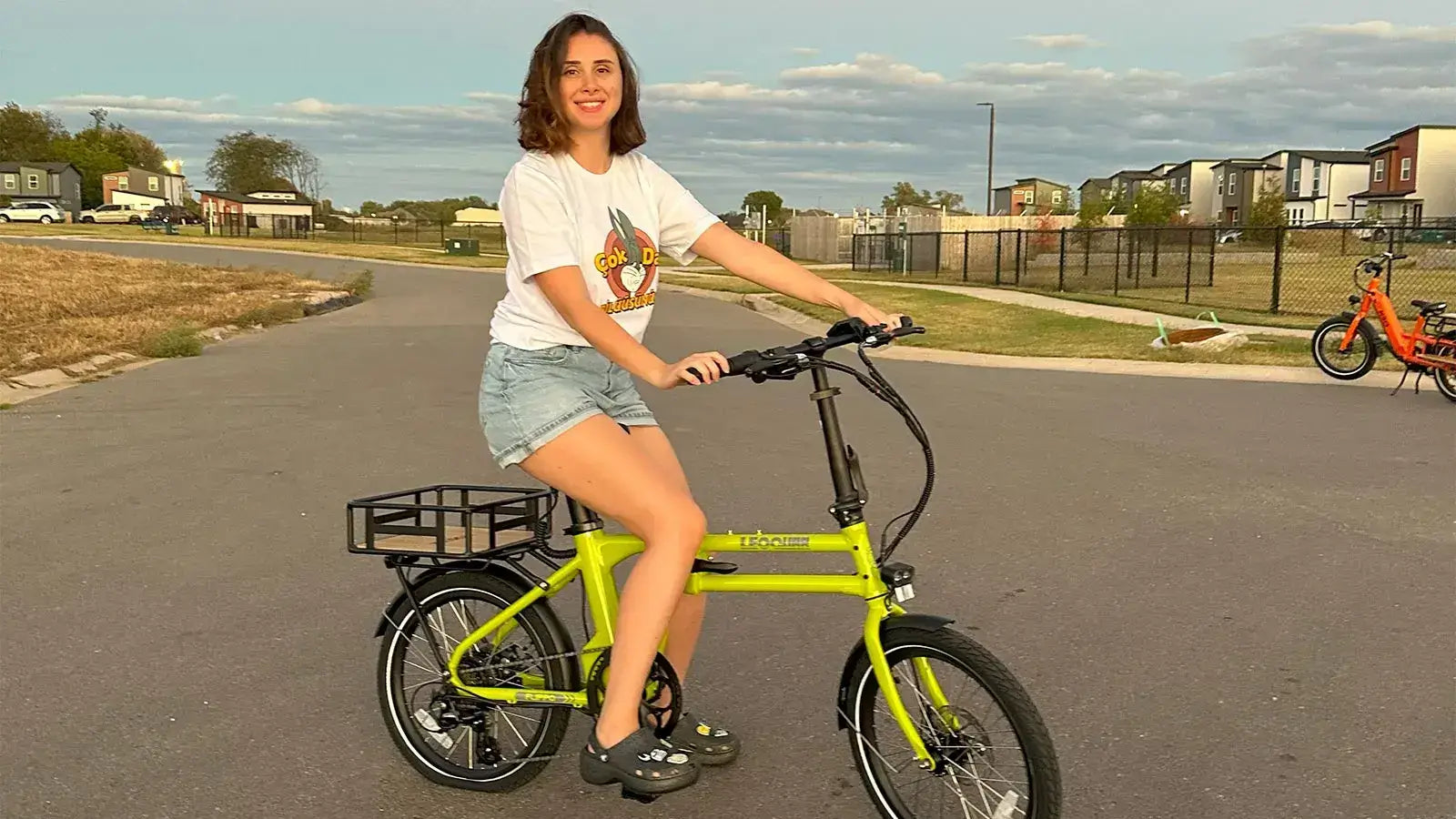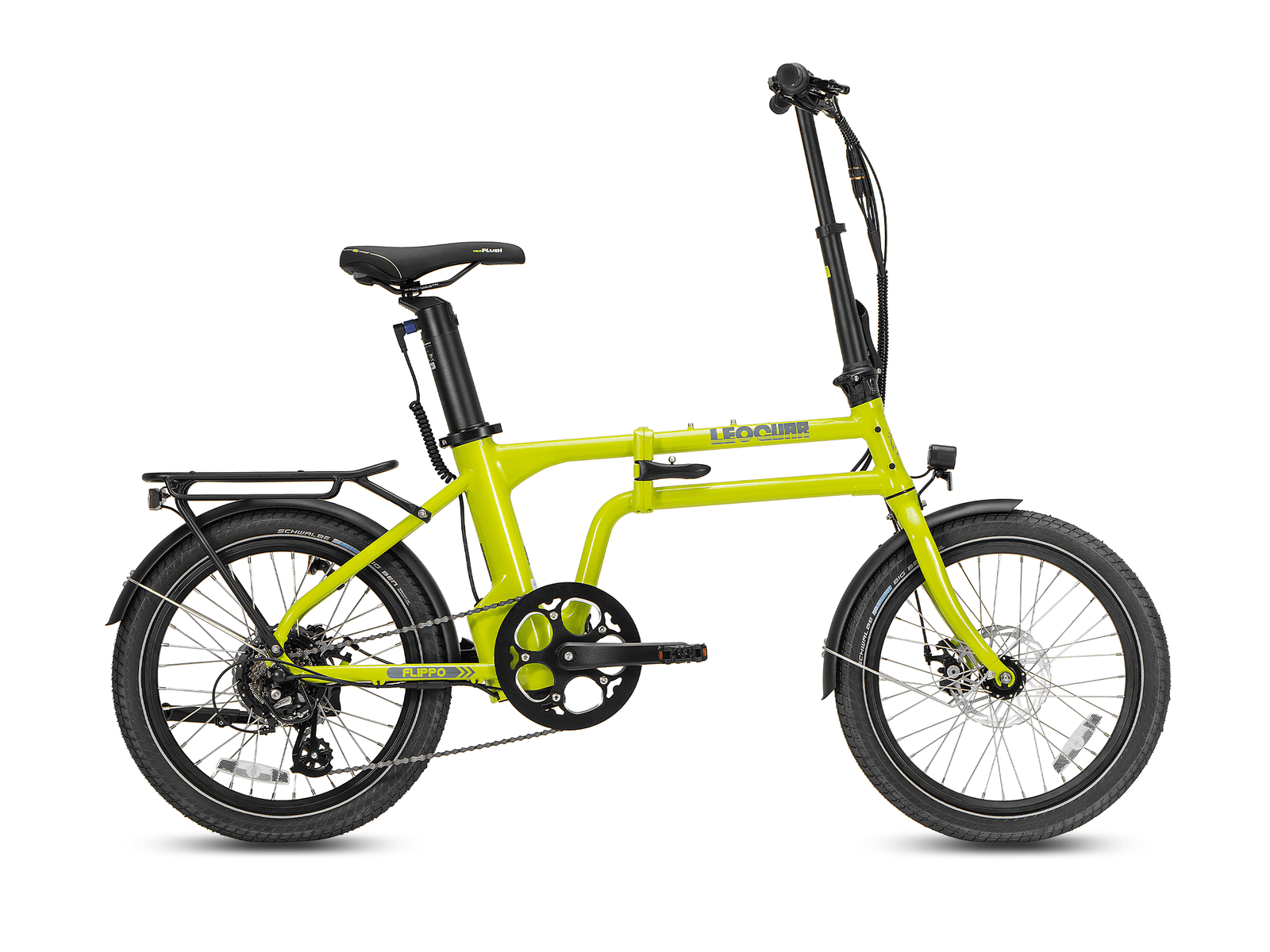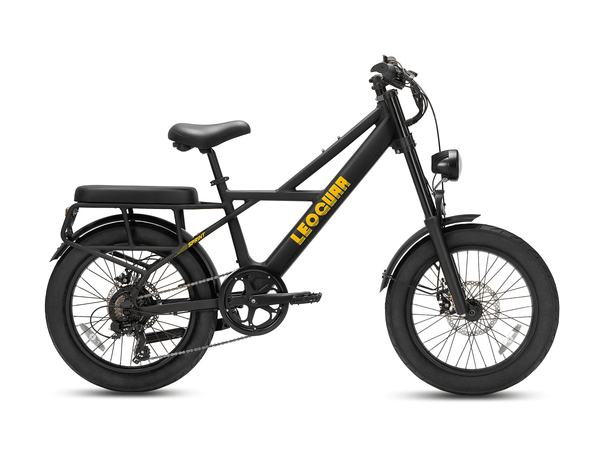
Why Electric City Bicycles Outsmart Scooters, Subways & Taxis Every Time
Tired of The Daily Grind?
We've all been there. Standing on a crowded subway platform, staring at a "delayed" sign while time ticks away. Stuck in the back of a taxi, watching the meter climb as traffic stands still. Or worse, hunting for a shared scooter only to find one with a dead battery sitting uselessly on the sidewalk. The daily commute in a modern city can feel like a battle you lose before your day has even begun.
This predictable chaos doesn't have to be your reality. There is a smarter, faster, and more enjoyable way to navigate the urban jungle that doesn't involve cramped subway cars or expensive ride shares. The hero of this story isn't a futuristic pod or a flying car; it's the humble, yet powerful, electric city bicycle. It's a vehicle that gives you back control, offering predictable travel times and true door-to-door convenience that no other transport method can match.
In this article, we're not just going to tell you an electric city bicycle is better. We're going to prove it with real numbers, real comparisons, and real-world examples that show exactly why it beats every other option. We'll break down, point-by-point, how it outmaneuvers, out-saves, and outsmarts every other common mode of city transport. It's time to stop fighting your commute and start enjoying the ride.
The Urban Commute Gauntlet
Before we explore the solution, let's have an honest look at the "competition." Each popular mode of urban transport comes with its own set of frustrations, hidden costs, and inefficiencies that drain your wallet and waste your time. This is the gauntlet millions of commuters run every day.
Shared Scooters
The promise of "hop-on, hop-off" convenience often falls short of reality. Unreliable Availability means they are often not where you need them, when you need them most. Hidden and Variable Costs through per-minute charges and unlock fees can add up surprisingly quickly, making budgeting difficult for regular users. Safety Concerns arise because small wheels and unstable platforms are a poor match for potholes, cobblestones, and uneven city pavement. The "Last Mile" Fallacy shows they are often used for short trips, but rarely provide a complete solution for a full commute from home to work.
Subways & Public Transit
The backbone of many cities, but one with a rigid spine and frequent aches. Fixed Routes and Schedules mean your travel is dictated by their network, not your destination, often creating a "last-mile problem" where you still need to walk far from the station. Unpredictable Delays from signal problems, overcrowding, and maintenance can turn a 30-minute trip into an hour-long ordeal without warning. The Cost of a Pass in a major city like New York can exceed $130 monthly, a significant recurring expense that adds up to over $1,500 per year. According to public transportation data, while essential, transit systems are under constant strain.
Taxis & Rideshares
The illusion of private, direct travel that quickly dissolves in city traffic. Surge Pricing means the cost of your ride can double or triple precisely when you need it most during rush hour, in bad weather, or on holidays. Traffic Helplessness leaves you as a passenger in a metal box, just as stuck in gridlock as everyone else, but you're paying for every minute of it. High Cumulative Cost shows that while a single ride may seem affordable, daily use for commuting results in a staggering annual expense that can exceed $5,000.

The E-Bike Advantage
Now, let's see how an electric city bicycle systematically dismantles these problems. It's not just a different option; it's a fundamentally better system for personal urban mobility that addresses every major pain point of city commuting. We'll compare it across the four factors that matter most to a commuter: Cost, Time, Health, and Freedom.
Cost: The Ultimate Budget Battle
The most common hesitation with an electric city bicycle is the upfront cost. However, when you look at it as an investment instead of a purchase, the numbers tell a powerful story that will change how you think about transportation expenses. A rideshare habit or a monthly transit pass feels like a small leak, but over a year, it drains your finances far more than the one-time cost of an e-bike.
Let's break it down with real numbers. We've created a table to illustrate the real-world financial impact over one year of commuting in a major city.
Estimated Annual Commuting Costs: Electric City Bicycle vs. Alternatives
| Transport Mode | Initial Cost | Monthly Cost (Fuel/Tickets/Fees) | Annual Maintenance | Total Annual Cost |
|---|---|---|---|---|
| Electric City Bicycle | $1,500 | ~$5 (Electricity) | ~$150 | $1,710 |
| Shared Scooter | $0 | ~$150 | $0 | $1,800 |
| Subway Pass | $0 | ~$130 | $0 | $1,560 |
| Taxi/Rideshare | $0 | ~$450 | $0 | $5,400 |
Assumptions: Costs are estimates for a 5-day work week. Rideshare/Scooter based on a 3-mile, one-way commute. E-bike maintenance includes a yearly tune-up and potential minor repairs.
The table makes it clear that smart money chooses electric bikes. In the very first year, an electric city bicycle is already more cost-effective than daily scooter use and competitive with a subway pass, all while offering superior benefits in every other category. Compared to a rideshare habit, there is no contest—you could save nearly $4,000 in a single year by switching to an e-bike. By year two, with the initial investment paid off, the e-bike becomes the undisputed financial champion, costing only about $200 per year to operate.
Time & Convenience: Reclaim Your Schedule
Time is our most valuable, non-renewable resource. An electric city bicycle is a time-creation machine that gives you back hours every week that other transport methods steal from you.
E-Bike offers true door-to-door travel that starts from your front step and ends precisely at your destination's entrance. Your commute happens on your own schedule, not according to someone else's timetable or traffic patterns. Subway requires walking to the station, waiting for the train, the journey itself, and then walking from the destination station, adding significant buffer time that most people don't account for. Taxi and Rideshare involve waiting for your car to arrive, and then you are completely at the mercy of traffic with no ability to bypass congestion.
As experienced city riders, we can tell you there is no better feeling than gliding down a dedicated bike lane, passing a long line of gridlocked cars. That's not just a time saving; it's a massive reduction in daily stress because you arrive when you plan to arrive, every single time.
Health & Wellness: Your Daily Workout
Modern life is largely sedentary, with most of us sitting at desks, sitting in cars, and sitting on trains for hours each day. An electric city bicycle elegantly solves this problem by integrating light-to-moderate exercise directly into your daily routine without requiring extra time or gym memberships.
E-Bike pedal-assist doesn't do all the work for you; it helps you maintain a steady pace without excessive strain. You still pedal, getting your heart rate up and muscles working, but without the strain of steep hills or the exhaustion that leaves you drenched in sweat before important meetings. You arrive at work energized, not exhausted, and with endorphins flowing from the light exercise. Subways and Taxis are completely passive and sedentary modes of transport that contribute nothing to your physical health.
Mental Health benefits go beyond the physical improvements. Spending time outside, getting fresh air, and engaging with your city in a more direct way is a proven stress reducer that improves mood and mental clarity. You're no longer a passive observer behind glass; you're an active participant in the city's rhythm and energy. This aligns perfectly with the World Health Organization guidelines on physical activity, which state that regular activity is crucial for both physical and mental well-being.
Freedom & Flexibility: Your City, Your Rules
This is perhaps the most transformative benefit that changes how you experience urban living. An electric city bicycle unshackles you from the rigid constraints of other transportation and opens up possibilities you never knew existed.
Spontaneity becomes possible when you want to meet a friend for a drink after work across town or need to run a quick errand during your lunch break. There's no need to check a train schedule, worry about surge pricing, or calculate if an extra trip is "worth it" financially. See a new park or cafe you want to explore during your commute? Just go and discover what your city has to offer.
Utility expands with the simple addition of a rack or panniers, transforming your e-bike into a capable cargo vehicle. Picking up a few bags of groceries, dropping off a package, or carrying your gym bag becomes effortless and doesn't require a separate trip. Total Independence means your city is no longer a series of points connected by transit lines but becomes an open map where you have the key to explore it on your own terms.
A Day in the Life
What do all these advantages look like in practice? Let's walk through a typical day for an urban e-bike commuter to see how it transforms the daily routine from a chore into a choice.
8:30 AM: The Morning Commute
You leave your apartment, hop on your electric city bicycle, and set the pedal-assist to a medium level for a comfortable ride. You merge into the bike lane, feeling the gentle push of the motor as you get up to speed without breaking a sweat. You approach the big hill that used to be a daunting, sweaty struggle on a regular bike or a long detour by car. Now, you cruise up it with a consistent, easy pace, your heart rate elevated just enough to feel invigorating rather than exhausting. You are bypassing the morning traffic, watching cars sit in gridlock while you move freely through dedicated bike lanes and shortcuts. You arrive at the office in 20 minutes, exactly as planned, feeling refreshed and clear-headed instead of stressed and tired.
12:45 PM: The Lunchtime Errand
You need to drop off a package at a post office 15 blocks away from your workplace. By subway, this would eat your entire lunch break with walking, waiting, and transfers making it nearly impossible. By taxi, it would cost $15 for a simple task and might take just as long in traffic. Instead, you unlock your e-bike, zip over in less than 10 minutes, and are back at your desk with time to spare for actually eating lunch. This is the kind of micro-trip that becomes effortless and free with an e-bike, unlocking a new level of efficiency in your day.
5:30 PM: The Journey Home
The workday is done, and instead of descending into a crowded, stuffy subway station, you get back on your bike and feel the evening air. You decide to take a scenic detour through the park, a small luxury that completely changes the tone of your evening and helps you decompress. On the way, you remember you need groceries for dinner tonight. You stop at the store, load your panniers with a few bags, and complete the last leg of your journey home. You arrive having enjoyed a stress-free journey, gotten some light exercise, and completed an errand, all in one seamless trip that would have required multiple modes of transport otherwise.

What About the Downsides?
To provide a truly expert perspective, it's crucial to be honest about the challenges. Owning an electric city bicycle isn't without its considerations, but these are not deal-breakers when you know how to address them properly. However, these are manageable challenges with straightforward solutions that experienced riders have already figured out.
The Initial Investment: Yes, a quality e-bike costs more upfront than a monthly transit pass or your first rideshare. But as our cost table shows, it should be viewed as an investment that pays for itself, often within the first 1-2 years of regular use. It's a one-time purchase for years of near-free transportation that actually saves you money in the long run.
Security & Theft: This is a valid concern in any city where bike theft unfortunately occurs. The solution is a multi-layered security strategy that experienced riders swear by for protecting their investment. Invest in high-quality locks—a heavy-duty U-lock combined with a chain lock is a great start that deters most opportunistic thieves. Learn proper locking techniques, securing the frame and wheels to an immovable object in well-lit, high-traffic areas. Finally, consider e-bike insurance or registering your bike's serial number for added peace of mind and recovery options.
Weather & Safety: You are more exposed to the elements than in a car or subway. For rain, a good waterproof jacket and fenders on your bike are game-changers that keep you dry and comfortable. For safety, a quality helmet is non-negotiable, and bright, visible lights for front and rear are essential for riding at dawn, dusk, or night. Crucially, battery safety is paramount when choosing your electric city bicycle. Always choose a bike and battery that are certified for safety standards like UL 2849, which ensures the entire electrical system has been rigorously tested for fire and electrical safety.
Your Journey Starts Here
The choice is clear for anyone who values their time, money, health, and freedom. For the urban commuter, the electric city bicycle is not just another option—it is the optimal one that addresses every major pain point of city transportation. It is the only mode of transport that simultaneously saves you money, gives you back your time, improves your health, and grants you unparalleled freedom to explore your city.
If you are ready to transform your commute from a daily struggle into an enjoyable part of your day, look for a city electric bicycle that prioritizes what urban riders actually need. A reasonably lightweight frame for easier carrying when needed, nimble handling to navigate city streets with confidence, and a battery with enough range for your daily round trip plus extra errands. Look for features like integrated lights, fenders, and cargo capacity that make daily use practical and convenient.
Stop letting your commute dictate your life and drain your bank account. It's time to conquer the city on your own terms, one empowered, effortless, and enjoyable ride at a time where you control the schedule, the route, and the experience. Your journey to a better urban life starts on two wheels, and the first pedal stroke toward freedom is just a decision away.
Frequently Asked Questions
1. Q: How far can I travel on a single charge with an electric city bicycle?
A: Most quality electric city bicycles can travel 20-50 miles on a single charge, depending on factors like battery size, pedal-assist level, terrain, and rider weight. For typical urban commutes of 3-10 miles each way, you'll easily have enough range for daily use plus errands without needing to charge every day.
2. Q: What happens if my electric city bicycle battery dies during my commute?
A: If your battery runs out, you can still pedal the bike like a regular bicycle to reach your destination. While it will be heavier than a standard bike due to the motor and battery, it's completely rideable. Most riders find that with proper charging habits, running out of battery becomes a non-issue after the first few weeks of ownership.
3. Q: Is it safe to ride an electric city bicycle in traffic with cars?
A: Yes, when you follow proper safety practices and use appropriate gear. Always wear a helmet, use front and rear lights, follow traffic laws, and stay visible to drivers. Many cities have dedicated bike lanes that make riding safer and more comfortable. Start with quieter streets to build confidence before tackling busier roads.
4. Q: How much maintenance does an electric city bicycle require?
A: Electric city bicycles require similar maintenance to regular bikes, plus occasional battery care. Expect to spend about $150-200 annually on maintenance including tune-ups, tire replacements, and brake adjustments. The electrical components are generally very reliable and require minimal maintenance beyond keeping the battery charged and dry.
5. Q: Can I use an electric city bicycle year-round in different weather conditions?
A: Yes, with proper preparation and gear, you can ride year-round in most climates. Invest in quality rain gear, fenders, and appropriate tires for your local conditions. Many commuters ride through winter with proper clothing and lighting. However, extreme weather like ice storms or heavy snow may require alternative transportation for safety.










































Leave a comment